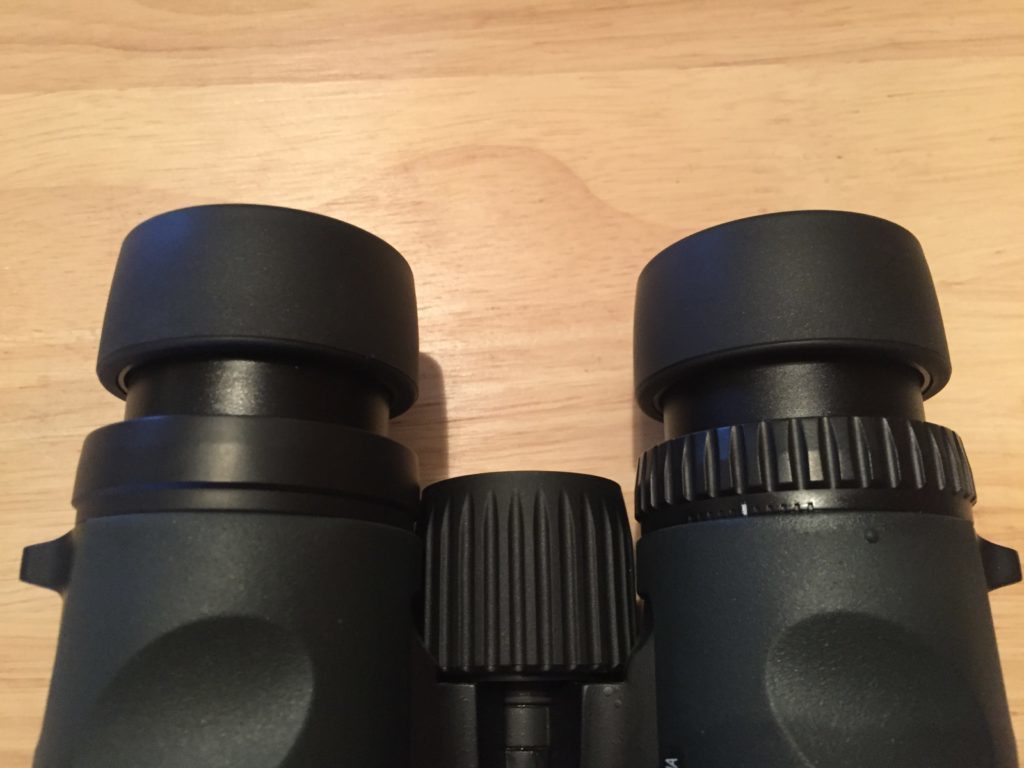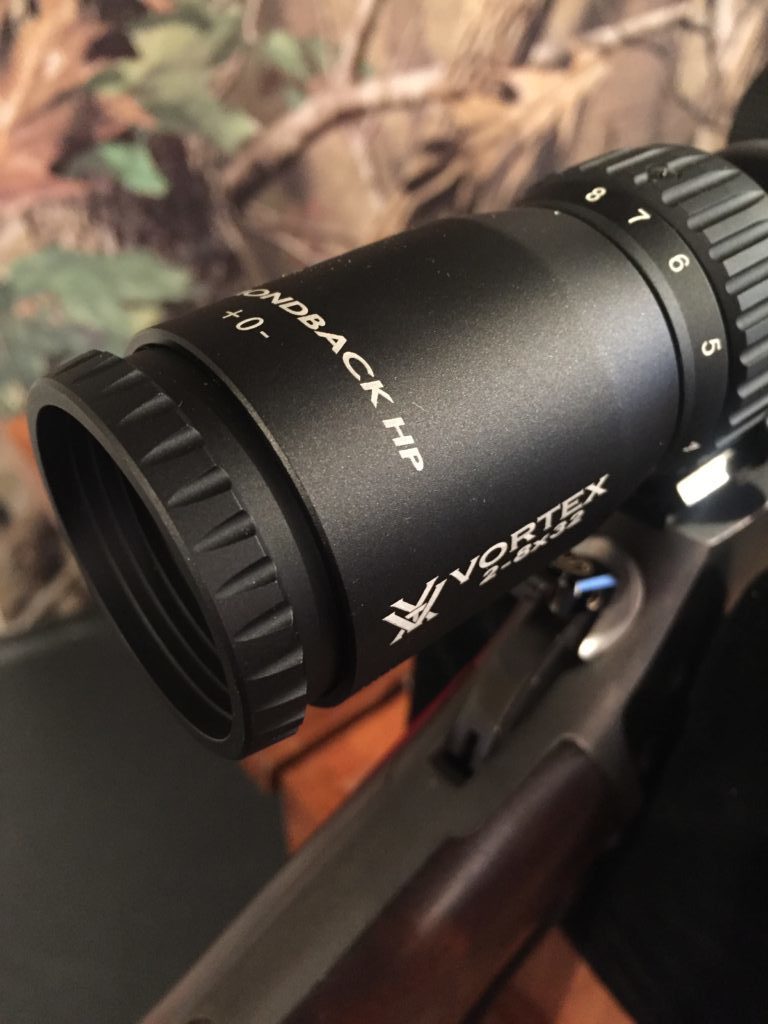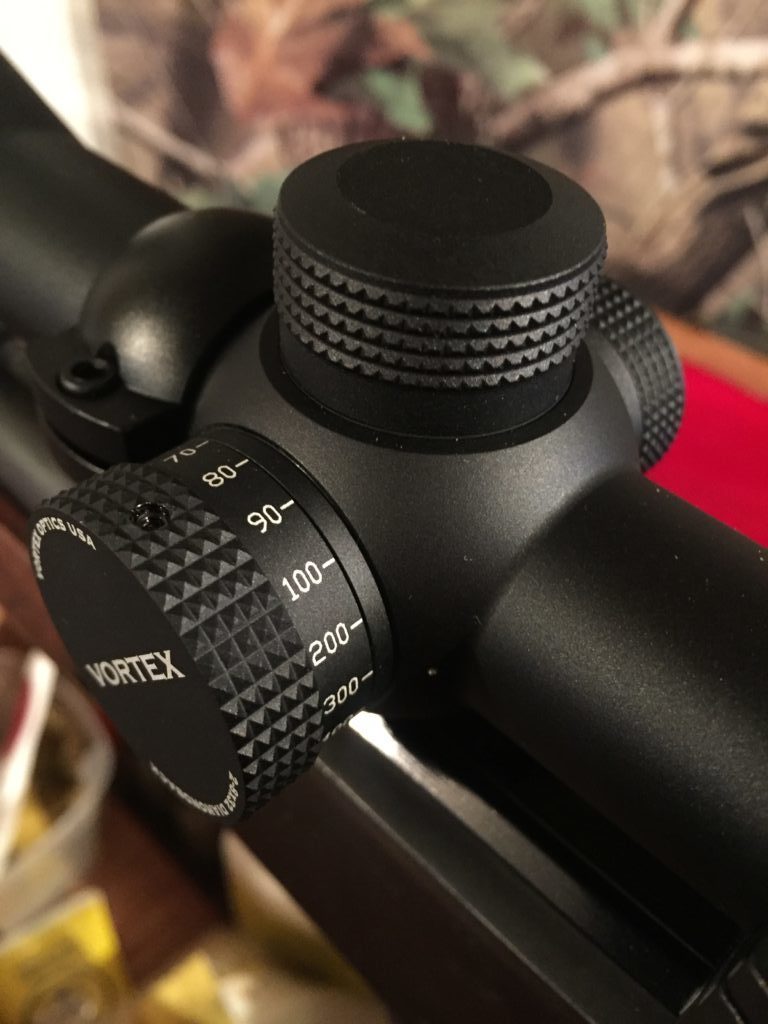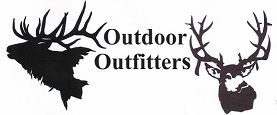People have no problem admitting they don’t hand-load and aren’t ballistics experts, or even they aren’t a mechanic and don’t know how to work on their ATV. But when it comes to optics, if they’ve mounted a scope in the last 30 years, they know everything they need to know about optics.

The argument can be made that the gap between what people think they know and what they actually know is larger in optics than any other product category in the shooting sports industry. Part of the problem stems from the unwillingness of people to admit that they don’t understand something.
For the record, I’m no optical physicist, nor do I think you need to be one, or speak like one, to have an above-average understanding of how optics work and how to use that knowledge to make a good buying decision or purchasing recommendation. That said, optical instruments are incredibly complex devices that rely on a myriad of moving parts and principles to function properly. An understanding of how these systems work, and what that means for performance in the field is critical to successfully pairing customers with optics that will keep them happy and shopping in your store.
It must be perfectly clear that selecting optics is an exercise in trade-offs. It would be easy to select a riflescope if there was a 1-24×32 chassis that weighed only 9 ounces, measured 11 inches and provided edge-to-edge clarity at any yardage. The reality is two-fold. That scope doesn’t exist, and because it doesn’t optics shoppers must prioritize their needs and wants.
1. Tube Diameter
In recent years, scopes with 30 or 34mm tube bodies have gained in popularity. Though larger and heavier, the higher diameter tubes allow for larger internal components, which do a better job managing light. The larger tubes are also typically more robust than the 1-inch models. As with any choice when selecting optics, there will be trade-offs when selecting tube diameter.Related: Q&A with ATN’s Steve Lemenov: More to the Shot Than the Technology
At The Counter: Help the customer prioritize what they want. If they are often on the move, have long hikes into where they hunt or want to keep their optic as compact as possible, point them towards the 1-inch models. They may give up some light management, but they will save ounces on their rifle. Meanwhile, if they are stationary or weight isn’t a serious consideration, 30mm may be something to consider. Especially if they will benefit from the stouter construction this chassis may offer.
2. Exit Pupil
Low-light performance of optics relies on many factors. No other factor plays as significant a role as exit pupil. Simply calculated, the exit pupil is found by dividing the objective lens diameter by the magnification. For an 8×32 binocular chassis, the exit pupil is 4mm. On a 2.5-10×50 riflescope it will range from 20mm on 2.5X to 5mm on 10X.
As a general rule of thumb is to keep the exit pupil above 4mm when being used in low-light conditions. This provides your eye an adequate, appropiate amount of light when it is dilated while dealing with the darker conditions in the field. During brighter conditions, the pupil in your own eye constricts. That means you’ll need a smaller exit pupil, and it’s fortunately suitable at these times.
At The Counter: Ask what the customer plans to be doing with the scope. A hunting scope should provide a 4mm exit pupil throughout the magnification range. This may mean less magnification, or possibly getting a larger scope than the customer was planning on. Help them understand the trade-offs in performance.
3. Over-Adjustment
In my experience, over-adjustment causes more perceived issues with riflescopes than any other issue. I might go so far as to say more perceived issues than all other factors combined. While having a scope with a lot of internal adjustment may seem like a good thing, in reality it is simply a crutch for poor mounting technique. The goal when mounting a scope should be zero adjustment with the turrets to sight the optic in.
When a scope is purchased new, it arrives in optical center. The absolute last thing you should do to this scope is make any adjustments. The optical system is designed to function at its best at optical center. Every click of the turret takes the scope further away from optical center, diminishing, ever so slightly, the performance of the scope.

The adjustment ring on the right barrel below the eye cup allows that side to be adjusted individually.
Additionally, if the turrets are adjusted out to an extreme it may cause the internal assembly to float. This means the turrets aren’t putting adequate pressure on the internals to keep them from moving during recoil. The result is a wandering point of impact. If the turrets are adjusted too far in the internals may become pinched. This may cause the internals to not adjust properly, or at all.
When you sight in an optic, keep meticulous records of adjustment from center. Make notes of every click and its direction. Doing so will allow for a quick return to the factory set optical center. Contrary to popular belief, you cannot screw your turrets all the way in, turn them out while counting clicks and go halfway back to get to optical center. In most scopes, there is a point where the turret losses contact with the internals, but it keeps clicking.
Counting those clicks gives you a false center.
I recommend never adjusting a scope more than one full revolution from optical center to sight in. With standard ¼-inch MOA clicks, a full revolution is 16 inches of adjustment. At 25 yards, that is 4 inches of adjustment. The best way to sight in your optic is by actually shooting the gun. I recommend starting at 25 yards. If at 25 yards you are more than 4 inches from your intended target, stop everything. At this point remove your scope from the scope rings and the rings from the base. Start over.
More often than not, whatever small alignment issue was causing problems is eliminated by doing this. It takes very little to put things out of whack, much less than you can see simply by eyeballing the setup. Reassemble the rings and scope and shoot again. If you are still missing by more than 4 inches, consider rings or a base that allows adjustment.Related: The Easy Way To Sight In An Optic
At The Counter: Bore-sighting is a common service, but is it right for your shop? A far better option is if your shop has a range, taking the gun there and actually fire it to get it close. When using a boresighter, people have a tendency to crank the turrets into place without keeping track of the adjustments. Best-case scenario is the scope isn’t as clear as it should be. Worst case, it can’t function because the erector assembly is floating or pinched. Explain to the customer why live-fire sight-in is best.
4. Adjust Your Diopter
Riflescopes and binoculars are equipped with diopter adjustment to help focus. In a riflescope, the diopter, at the back of the eyebell, is used only to focus the reticle. It should not be adjusted to focus the target. In a binocular, the diopter serves a slightly different purpose. Because a binocular uses two separate barrels to transmit one image to your eye, and your eyes are not exactly the same, the diopter allows for both barrels to be focused separately, so that the primary focus knob adjusts for both eyes when it is used. Whether on your binocular or riflescope, diopter adjustments are meant to be set for your eye, then left alone.
To set your riflescope diopter, look through the riflescope at a plain background closer than 20 feet. Adjust the diopter until the reticle is perfectly clear. Once the diopter is set do not adjust it. There is no need.
For a binocular, the process is somewhat more complicated. Locate the barrel that has the diopter adjustment (usually the right), and cover place the objective lens cover over the end of the barrel. It is important that you do not simply close your eye, as your brain will make adjustments to your eye being closed. With the objective cover in place, use the main focus knob to focus on a detailed item about 10 feet from you. Choose something that is detailed enough that you can be very finicky when focusing. When the object is in focus, be careful to not move the focus knob from that position. Carefully place the objective cover over the exposed lens and remove the cover from the barrel with the diopter adjustment. Now, looking at the same object, use the diopter adjustment to bring the item into focus, without moving the main focus knob. This compensates for any differences in your eyes. Once adjusted, do not move your diopter adjustment.

Scope diopter adjustments are used only to focus the reticle, not the target.
Failure to adjust the diopter on your riflescope can lead to a fuzzy reticle, which isn’t going to provide the most accurate aiming possible. It’s common for people to complain that when they use binoculars for extended periods of time (or sometimes if using them at all) they suffer from headaches. The most likely cause of this is not having the diopter properly adjusted. Much like using glasses that aren’t prescribed for your eye, a binocular that hasn’t been adjusted properly is going to lead to a headache.Related: Three Ways to Help Your Hunting Customers Close the Distance
At The Counter: Help the customer adjust the bino for their eye while they are shopping. If the diopter has been adjusted on one model and not another, they may think they are buying the right model for them. They won’t be happy in the long run. For scope customers, ensure they are happy with their reticle choice by getting them to put it in focus. Explain that unless the scope has an AO or side-focus feature, the diopter is not for adjusting target clarity.
5. Reticle Choice
Recently, ballistic reticles have garnered a lot of attention. Hunters and shooters alike are drawn to the ease of use and accuracy of reticles that match the round they are using in the field. Sadly, this has also led to a great deal of confusion regarding these reticles and their capabilities.
No other reticle suffers from the amount of misinformation that the Mil-Dot reticle. Often referred to as a ballistic reticle, it’s function isn’t truly ballistic. A ballistic reticle is designed around the ballistic curve of a given round. As any round travels down range the amount of drop increases as it loses velocity. That is to say that the drop of a .270 bullet from 200 to 300 yards is less than the drop of the same bullet from 500 to 600 yards. In a ballistic reticle, the aimpoint that corresponds to those yardages must be further apart to be truly ballistic.
A Mil-Dot reticle is comprised of dots, or half dots, that are evenly spaced throughout the reticle field. To keep things simple, we will assume Mil spacing is 3.6 inches from center of a dot to center of another dot at 100 yards when used on 10X. Because the dot distance is evenly and consistently spaced, it cannot account for the ballistic curve of a bullet at long range.
The Mil-Dot is actually better suited as a rangefinding reticle. Because the dot distance is known, and can be recalculated depending on magnification, if a target of known size is being shot toward, you can use a mathematical equation to solve for the distance. Those trained on the Mil system find it quite useful, but for most shooters it requires too much calculation to be done on the fly for it to be used effectively. For that reason, if a ballistic reticle is what the customer wants, steer them away from the Mil-Dot.Subscribe: If you don’t want to bring your iPad into the bathroom, we can send you a magazine subscription for free!
At The Counter: Customer satisfaction with shooting sports purchases are tough to measure at the time of sale. Until the product is put to use in the field and the hunter succeeds (or fails), they are still forming an opinion. This is true of customer service, as well. If the hunter doesn’t realize until after purchasing, mounting and using a scope, that the reticle doesn’t work for their application, you’ve got real problems. Work with the customer to understand exactly what they want the scope to do then make sure they understand the implication of their choice in reticle.

A side focus wheel allows for easier adjustment in a shooting position than an adjustable objective.
6. Parallax Error
Parallax is the most complicated optics issue we will discuss. Scopes equipped with an adjustable objective (AO) or side-focus system can correct for parallax error. Though it can be corrected with a side-focus system, parallax error is not a focus issue. Parallax error can cause point of impact variance because the reticle and the target are not on the same optical plane. The reticle lens inside the scope is viewed over top of the target image, for this instance, 200 yards away. On a fixed parallax scope, the parallax is corrected for at 100 yards. This means that the optical system at 100 yards has compensated for the distance so when you move your head slightly, the reticle and the target move together, as if they were on the same optical plane. At 200 yards, that same slight movement of your head would show that the reticle can float off target.
For most hunting situations, the issue is negligible. The movement is typically measured in inches — or fractions of an inch — but for precision shooters that could mean missing the target completely.
AO and side-focus systems adjust internal lenses to remove that error. While making this adjustment, the focus of the target often improves, as well. It is important to note, however, that being in focus doesn’t mean parallax has been resolved. Also, resolving parallax doesn’t mean the target will be in perfect focus. The only way to know that parallax is corrected is by moving your head slightly, up and down and side to side, to make sure that the reticle and target image or moving together in unison.
AO and side-focus systems do no adjust the reticle. Some customers think that if you turn the focus knob to 100 yards, sight-in the rifle and then turn it to 200 yards, that the rifle is now set to that yardage. Be sure they know that is not the case.
At The Counter: Determine the needs of the hunter or shooter. If parallax correction isn’t necessary, steer the customer away from those models. More often than not, especially with optics, keeping it simple is the best way to go. Features that complicate functionality just open the door for errors to be made in the field.
7. Focal Plane
First focal plane (FFP) scopes are becoming more common as the technology it takes to produce them becomes more cost efficient and the price of the scopes dips into the range of more hunters and shooters. As is often the case, however, many folks are buying into a technology despite not fully understanding what it is or how it works.
An FFP scope arranges the reticle and the target lenses of the optical system such that they are affected equally by a change in magnification. More traditional second focal plane scopes are designed in a way that the target is magnified, but the reticle remains a constant size.
Deciding if an FFP scope is right for the customer depends on several other factors, but primarily it is a function of reticle choice. Knowing what we know about Mil-Dot reticles, it is easy to see that if the reticle changes in conjunction with the magnification it makes the reticle easier to use. The dot-to-dot distance will always be 3.6 inches, eliminating one calculation that would need to be made in the field.
Similarly, for a true ballistic reticle, the demand that the scope remains on the designated power the reticle is designed around is now gone, making the scope more flexible. Where problems arise with ballistic reticles is in the less-specific ballistic reticle offerings. For those scope designs that offer a ballistic reticle that isn’t specific to a caliber, the changing magnification allows the reticle to be tuned, in a way, to that specific round. With an FFP scope, that flexibility is taken away, because the reticle is always going to related to the target in the same spaces each time.
At The Counter: The thing that still drives most purchasing decisions is the customer’s budget. FFP scopes are still considerably more expensive than traditional second focal plane models, so for shooters wanting to take advantage of the measuring abilities of the Mil-Dot reticle, an FFP scope may be an option. This is also so for those looking for a scope dedicated to a specific caliber. For customers who need more flexibility or a scope that maybe moved from one rifle to another, the more traditional SFP scopes may be the solution.
Optics customers often come into a shop looking for products that manufacturers wish they could build, but as has been discussed, optics are a trade-off. A scope that transmits a maximum amount of light is going to have larger components than a smaller scope that is lighter, more compact and doesn’t manage light as well. More magnification requires larger components as well. Reticle choices have implications beyond how you aim at your target. These aren’t complicated issues. It’s no different than making sure a rifle doesn’t have a length of pull that isn’t suitable for the shooter, or that the draw length on a bow is correct. It’s just a set of information that many retail employees don’t have. Learning the basics of these principles, and their implication on scope purchasing decisions can make stocking the right product, and sell-thru, a much

